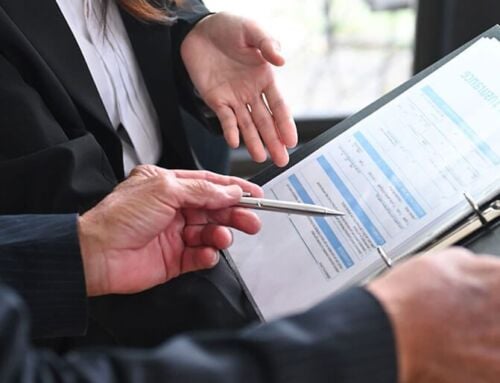Experiencing a loss at your business, whether it’s from theft, an accident, or damage, can be a stressful and disruptive event. You might feel overwhelmed, wondering what to do first and who to call. While you hope you never have to face this situation, understanding the insurance claims process beforehand can make a world of difference. It transforms a daunting task into a manageable series of steps.
So, what exactly is an insurance claim? It’s your formal request to your insurer to cover a loss protected under your policy. It’s the moment your insurance plan springs into action to provide financial support.
Preparing to make your claim
Before you even make the first call, the work you do to document your loss is invaluable. Think of yourself as a detective building a case; the more detailed your information, the smoother the entire process will be. Proper preparation can significantly speed up your claim’s resolution.
Here’s a checklist of what to gather and do right after a loss:
- Take photos and videos
Capture everything. Take detailed photos and videos of all damaged property and the surrounding area. If items were stolen, look through your records for any existing photos of them.
- Create a list of your inventory
Make a comprehensive list of every item that was lost or damaged. Be as specific as possible.
- Collect proof of ownership
For the items on your list, collect proof of purchase, receipts, warranties, and user manuals. These documents help establish the value of your lost property.
- Preserve any damaged items
Do not throw away damaged items unless they pose a safety or health risk. It’s crucial to confirm with your insurance adjuster before disposing of anything, as they will need to inspect the property.
- Keep detailed notes
Write down everything you remember about the incident. Note the date, time, and circumstances. Every detail, no matter how small it seems, can be helpful. - Save all receipts
Keep every receipt related to the incident, including costs for cleanup, temporary repairs, or other immediate expenses you incur.
Putting in this effort upfront demonstrates the extent of your loss and gives your claims team the information they need to get started right away.
The 5 steps of the insurance claim journey
Once you’ve documented the incident, the formal claims process begins. While every situation is unique, the journey generally follows five main stages. Your claims professionals are here to guide you through each one, providing the support you need.
Step 1: Connect with your broker
Your first point of contact should always be your insurance broker. Why start here? Because your broker is your dedicated advocate. They have an in-depth understanding of your specific policy and can provide immediate advice on how to proceed. They act as the bridge between you and the insurance company, ensuring your needs are clearly communicated.
When you contact your broker, be ready to provide all the documentation you’ve gathered: your detailed inventory, photos, and notes about the incident. This allows them to get a clear picture of what happened. Once they have this information, they will report the claim, and an adjuster will be assigned to your case to officially begin the process.
Step 2: The claim investigation
After your claim is filed, a claims adjuster will launch an investigation. Their primary role is to understand the full scope of the event. They will work to determine the extent of the loss or damage and verify that it is covered by your policy.
During this stage, the adjuster may visit the site of the loss to see the damage firsthand. They will also seek to identify if any other parties were liable for the incident. You can greatly assist the investigation by providing the contact information of any witnesses or other individuals involved. Your cooperation here is essential for a thorough and fair investigation.
Step 3: A thorough policy review
With the initial investigation complete, the adjuster will conduct a detailed review of your insurance policy. This is a critical step where they match the facts of your claim against the specifics of your coverage. It’s not just about what happened, but how your policy responds to it.
The adjuster will confirm what is covered, what is not, and explain any limits that may apply. They will also inform you of your deductible—the amount you are responsible for paying before your insurance coverage kicks in. This review ensures transparency and helps you understand exactly what to expect financially. Have you ever read your policy from start to finish? This is the moment when all those clauses and definitions become real, and your adjuster is there to interpret them with you.
Step 4: Evaluation of any damages
To ensure an accurate assessment of your loss, your adjuster may need to bring in outside experts. This could involve hiring appraisers to determine the value of specialized equipment, engineers to assess structural damage, or contractors to estimate repair costs. Their expert advice ensures the evaluation is precise and fair.
Once the evaluation is complete, your adjuster might provide you with a list of preferred vendors, such as trusted repair companies or suppliers. While you are never obligated to use these vendors, they are often a convenient option. We’ve already vetted them for quality and reliability, which can save you significant time and effort in finding a trustworthy professional to handle the repairs.
Step 5: Arranging for resolution
This is the final step in the process. After repairs are finished and any lost or damaged items have been replaced, your adjuster will discuss the settlement of your claim. This involves finalizing the total costs and arranging for payment.
The time it takes to receive payment can vary depending on the complexity of your claim. A straightforward claim might be settled quickly, while a more severe and complicated loss will naturally take longer to resolve. Throughout this stage, your adjuster will keep you informed of the progress. Their goal is to close your claim efficiently so you can put the incident behind you and focus on running your business.
Protect yourself with the right support
Every claim is different, and although the claims process can vary slightly according to the situation, your adjuster will devote the time and attention it takes to resolve your case. For more information on how we can assist, visit our Submit a Claim page.






